AL NADIM EXIM is a Best Quality Biryani Basmati Rice Supplier from India.
ALNADIM EXIM Supply Rice to all over the World
AL NADIM EXIM Biryani Basmati Rice is a long-grain, aromatic variety of rice that is commonly used to prepare biryani, a famous and flavorful dish in South Asian cuisine. Basmati rice is preferred for biryani due to its distinctive fragrance, fluffy texture, and ability to absorb spices and flavors while remaining non-sticky.
Key Characteristics of Biryani Basmati Rice from ALNADIM EXIM Supplier:
1) Aroma: Basmati rice has a unique, nutty fragrance that enhances the aroma of the biryani.
2) Long Grains: The grains are long and slender, making the dish visually appealing.
3) Fluffy Texture: When cooked properly, the grains remain separate, giving biryani its signature fluffy texture.
4) Flavor Absorption: It absorbs the rich, complex spices and flavors used in biryani, making each bite flavorful.
Cooking Tips for Biryani Rice from AL NADIM EXIM:
- Soaking: Soaking the rice for 20-30 minutes before cooking helps the grains expand and cook evenly.
- Parboiling: In biryani, the rice is usually parboiled before being layered with meat, vegetables, or other ingredients.
- Use of Ghee Biryani is often prepared with ghee (clarified butter) for added richness.
Biryani Basmati Rice is essential in making a perfect biryani, whether it’s a chicken, lamb, beef, or vegetable version. Its unique properties make it stand out from other types of rice, contributing to the overall richness and elegance of the dish.
Biryani Basmati Rice plays a pivotal role in making biryani a dish of royalty. Biryani itself is a layered, slow-cooked preparation, often involving fragrant spices, marinated meat or vegetables, and, of course, Basmati rice. The rice serves as a blank canvas that absorbs and enhances the rich flavors of the accompanying ingredients, creating a balanced yet vibrant taste profile.
Why ALNADIM EXIM Basmati Rice is Ideal for Biryani ?:
- Non-Stick Quality: One of the hallmarks of a great biryani is that the rice grains remain separate after cooking. Basmati’s structure naturally supports this, ensuring that the rice doesn’t clump together.
- Firm Texture: The firmness of Basmati rice is perfect for the biryani cooking process, especially during the “dum” (slow cooking in a sealed pot). The rice holds its shape without becoming mushy, even after absorbing the moisture from the meat, vegetables, or yogurt-based marinades.
- Enhanced Flavor through Cooking: When Basmati rice is cooked with saffron, cardamom, cinnamon, and cloves (commonly used spices in biryani), it absorbs their aroma and flavor deeply, elevating the overall taste of the dish. The rice becomes infused with these spices, which gives it a slightly sweet, fragrant, and spicy character.
- Colorful Appearance: In traditional biryani, the Basmati rice is sometimes tinted with saffron or turmeric, giving the dish beautiful streaks of golden yellow amidst the natural white grains. This not only enhances the visual appeal but also adds subtle layers of flavor.
Types of Biryani Using Basmati Rice ?:
- Hyderabadi Biryani: Known for its rich spices and flavors, Hyderabadi biryani is a dum-cooked dish with layers of marinated meat and partially cooked Basmati rice, often topped with fried onions and saffron.
- Lucknowi (Awadhi) Biryani: This biryani is lighter on the spices but equally flavorful, with a focus on marinated meat and fragrant rice. It is often cooked with delicate saffron-infused rice and mildly spiced, yogurt-based gravies.
- Kolkata Biryani: Characterized by its use of potatoes along with meat, this biryani is mildly spiced, with fragrant Basmati rice forming the base. It’s a perfect example of how rice can balance spices and ingredients to create a unique flavor.
- Malabar Biryani: This version from Kerala uses Basmati rice along with a special mix of spices and coconut oil, giving it a distinct southern twist.
- Vegetable Biryani: For those who prefer vegetarian versions, Basmati rice blends well with a variety of vegetables, paneer, or tofu, and can be just as flavorful when cooked with ghee, spices, and herbs.
Tips for the Perfect Biryani with Basmati Rice:
– Use Quality Basmati Rice: Invest in high-quality Basmati rice for the best results. Aged Basmati rice tends to be more fragrant and flavorful.
– Layering: One of the secrets to a great biryani is layering. Ensure the partially cooked Basmati rice is layered over the marinated meat or vegetables, allowing the rice to cook fully in the steam (dum) while absorbing all the flavors.
– Steam Cooking (Dum): Biryani is traditionally cooked using the dum method, where a tight seal is created on the pot using dough or a heavy lid, allowing the rice and other ingredients to cook in their own steam, developing deep, rich flavors.
– Resting Time: After the biryani is done cooking, allow it to rest for 10-15 minutes before serving. This helps the rice absorb any remaining moisture and flavors, making it fluffier and tastier.
Best Quality Supplier of Rice from India
India is one of the largest producers and exporters of high-quality rice, especially Basmati rice, known for its aroma and long grains. Here are some of the best-quality rice suppliers from India that have a strong reputation for providing premium Basmati and non-Basmati rice globally:
– Quality Assurance: Look for suppliers with international certifications like ISO, HACCP, and USDA Organic.
– Aging Process: Properly aged Basmati rice has better aroma, taste, and texture.
– Supply Chain Efficiency: Choose suppliers with efficient supply chains to ensure timely deliveries.
– Market Reputation: Opt for companies with a strong track record of delivering high-quality rice consistently.
– Sustainability: Some suppliers focus on eco-friendly farming practices and fair trade policies, which may be important depending on your requirements.
These suppliers offer some of the finest rice varieties from India, including Basmati, which is cherished worldwide for its quality, aroma, and texture.
Checking the quality of Basmati Biryani Rice is essential to ensure that you are using the best rice for preparing a flavorful and aromatic biryani. High-quality Basmati rice enhances the texture, aroma, and taste of the dish. Here are some effective ways to assess the quality of Basmati Biryani rice:
1. Length of the Grains
– Visual Inspection: High-quality Basmati rice grains should be long, slender, and pointed at both ends. After cooking, they elongate further without widening.
– Test: Measure a grain of rice; premium Basmati rice grains are typically around 7 to 8 mm long in raw form.
2. Aroma
– Smell the Rice: Basmati rice has a distinct nutty and floral fragrance. When raw, good-quality Basmati rice should have a sweet, earthy aroma. After cooking, this aroma intensifies.
– Tip: Lower-quality or adulterated Basmati rice lacks this signature fragrance or may have a dull, musty smell.
3. Texture and Firmness
– Feel the Grains: Good-quality Basmati rice feels firm and smooth to the touch. It shouldn’t crumble easily between your fingers.
– Cooked Texture: After cooking, the grains should remain firm and separate, not sticky or mushy. If the rice sticks together or breaks apart easily, it’s likely of lower quality.
4. Age of the Rice
– Check Packaging Information: Aged Basmati rice is considered superior because the aging process enhances the flavor and reduces moisture content, making it less sticky when cooked.
– Tip: Look for rice that has been aged for at least 1 to 2 years, which is usually mentioned on the packaging. Aged rice tends to have better flavor, texture, and aroma.
5. Cooking Results
– Water Absorption: High-quality Basmati rice absorbs water well during cooking without becoming sticky. It doubles in length, maintaining its long and slender shape.
– Tip: After cooking, the rice should be fluffy, with grains well separated. If the rice clumps together or becomes mushy, it might not be premium Basmati.
6. Color of the Rice
– Inspect the Color: Premium Basmati rice has a slightly off-white, creamy, or pale golden color, which indicates it is naturally aged. Pure white grains may be bleached or lower quality.
– Tip: Avoid rice that looks excessively bright white or has too many broken grains.
7. Broken Grains
– Visual Check: A good batch of Basmati rice should have minimal broken grains. The fewer the broken grains, the higher the quality.
– Tip: Examine the rice to see if most of the grains are intact and long. A high percentage of broken grains affects the texture and cooking quality.
8. Elongation on Cooking
– Cooking Test: Cook a small sample of the rice. High-quality Basmati rice will elongate significantly during cooking, sometimes up to double its original length.
– Tip: After cooking, if the grains remain short or break apart, it’s a sign of inferior quality.
9. Float Test (Purity Check)
– How to Perform: Place a few grains of rice in a glass of water and stir. If the rice floats, it might indicate that the rice has been adulterated with chalk or other substances.
– Tip: Pure Basmati rice should sink to the bottom.
10. Brand Reputation
– Check Brand: Choose rice from reputable brands known for providing high-quality Basmati rice, such as India Gate, Daawat, Kohinoor, or Amira. These brands often follow strict quality control standards.
– Tip: A trusted brand ensures the rice is properly aged, sorted, and free from impurities.
11. Packaging and Storage
– Inspect the Packaging: Good-quality Basmati rice is typically packed in airtight containers or bags with proper labeling. Make sure the packaging is sealed properly to avoid moisture exposure, which can affect the rice’s quality.
– Tip: Store rice in a cool, dry place. Proper storage prevents the rice from absorbing moisture, which can affect its texture and cooking quality.
12. Check for Additives
– Check Label for Additives: Some rice may be polished or enhanced with additives to make it look better. Premium Basmati rice should be free from additives like artificial whiteners or fragrances.
– Tip: Always opt for naturally aged Basmati rice without any artificial enhancements.
To ensure you’re selecting the best Basmati Biryani Rice, focus on the grain’s length, aroma, texture, and elongation properties during cooking. Aged rice from reputable brands is usually the best choice for making authentic and flavorful biryani. Cooking a small sample is often the most reliable way to test the rice’s quality before using it in your dish.
13. Testing Rice After Cooking
– Fluffiness: After cooking, high-quality Basmati rice should be light and fluffy. Each grain should be well-cooked yet separate, not clumped together.
– Tip: The rice grains should have a slight bounce when gently pressed between your fingers. If the grains become too soft or lose their structure, it may indicate lower quality rice.
14. Water-to-Rice Ratio
– Measure Carefully: For premium Basmati rice, the water-to-rice ratio is typically around 1.5 to 1 (1.5 cups of water for every 1 cup of rice). High-quality rice absorbs water without becoming overly soft.
– Tip: If your rice requires more water than usual or becomes mushy with standard water amounts, the rice may not be of optimal quality.
15. Check for Impurities
– Sort the Rice: High-quality rice should be free of stones, husks, or any other foreign matter. Cheaper or lower-quality rice may sometimes contain these impurities.
– Tip: Spread the rice out on a flat surface and visually check for any foreign particles before washing or cooking.
16. Fragrance During Cooking
– Aromatic Steam: As Basmati rice cooks, it releases a distinctive, sweet, floral aroma that fills the kitchen. This fragrance is a sign of high-quality rice.
– Tip: If you notice a weak or unpleasant smell during cooking, the rice might be stale or not of premium quality.
17. Uniformity of Grains
– Inspect for Consistency: Premium Basmati rice should have uniform grains in both shape and size. A good-quality batch should have long grains with minimal variation in length or thickness.
– Tip: If the grains vary significantly in size or shape, it’s an indicator of lower quality rice or mixed rice varieties.
18. Moisture Content
– Check Moisture: Basmati rice should have low moisture content, especially if it’s aged. Too much moisture in rice can lead to clumping or uneven cooking.
– Tip: Gently press the rice grains between your fingers. If they feel overly soft or stick to your fingers, they may contain excessive moisture, which affects the quality.
19. Appearance After Cooking
– Shiny Surface: High-quality Basmati rice, once cooked, should have a slightly glossy, smooth surface. This is due to the proper balance of moisture and starch in the grains.
– Tip: If the rice looks dull or overly dry after cooking, it may not be of high quality or might have been improperly stored.
20. Dry Touch Test (Before Cooking)
– Feel the Dry Rice: High-quality Basmati rice should feel firm and dry to the touch when raw. A powdery or sticky feeling can indicate excess moisture or poor processing.
– Tip: Rub the rice between your fingers. If you notice any powdery residue, it could be a sign of lower-quality milling or storage issues.
21. Soaking Test
– Soak Before Cooking: Premium Basmati rice benefits from being soaked in water for 20–30 minutes before cooking. After soaking, the grains should swell slightly but remain intact.
– Tip: If the rice breaks apart or becomes too soft during soaking, it may be an indicator of poor quality or improperly aged rice.
22. Rice Expansion Ratio
– Measure Expansion: Basmati rice is known for its significant expansion during cooking, typically doubling in size. After cooking, the grains should lengthen without breaking apart.
– Tip: Cook a small batch and observe the length of the grains. Premium rice should retain its shape while increasing in size significantly.
23. Cooking Time
– Quick Cooking: High-quality Basmati rice usually cooks faster than other types of rice, often within 10 to 15 minutes of simmering. If it takes longer to cook or needs more water, it may not be the best quality.
– Tip: Keep an eye on the cooking time. If the rice requires much more time than usual, it could be an indicator that the rice is of a lower grade or has absorbed too much moisture during storage.
24. Geographical Indication (GI Tag)
– GI Certification: Authentic Indian Basmati rice, especially from regions like Punjab, Haryana, and Uttar Pradesh, often carries a Geographical Indication (GI) tag. This tag ensures that the rice originates from traditional Basmati-producing regions.
– Tip: Check the packaging for a GI tag or certification. This ensures that the rice is genuine Basmati from the specific regions known for producing it.
25. Brand Reliability and Certifications
– Trust Established Brands: Reputable brands of Basmati rice are often certified for quality and consistency. Look for certifications such as ISO, HACCP, or USDA Organic on the packaging.
– Tip: Opt for well-established brands that have a reputation for high-quality products. They are more likely to provide premium rice that has undergone stringent quality control processes.
Biryani rice and Basmati rice are often discussed together since Basmati rice is commonly used to make biryani, but there are distinctions between the two terms. Here’s a comparison to clarify the differences and uses of each:
Definition OF BIRYANI Rice
– 1Biryani Rice: This refers to the rice prepared specifically for biryani, a rich and flavorful Indian or Pakistani dish made by layering rice with meat (or vegetables), spices, and herbs. The term “biryani rice” can be used more generally to refer to the rice component in biryani, which may be Basmati or other long-grain rice varieties.
– Basmati Rice: A specific type of long-grain rice, known for its distinct aroma, slender grains, and ability to elongate during cooking. Basmati rice is traditionally used in many dishes, including biryani, and is especially prized in Indian, Middle Eastern, and Persian cuisines.
1. Origin of biryani rice is india
– Biryani Rice: The term “biryani rice” doesn’t refer to a specific rice variety but rather to the rice that is prepared as part of the biryani dish. Different regions may use different types of rice for biryani, but Basmati is the most traditional choice.
– Basmati Rice: Basmati rice is a specific rice variety grown primarily in the Indian subcontinent, especially in the Punjab regions of India and Pakistan. It has a protected Geographical Indication (GI) tag in India and Pakistan, meaning it is tied to certain geographical areas.
BUY FROM BIRYANI RICE FROM ALNADIM BEST AND CHEAP PRICE
3. Usage of biryani rice
– Biryani Rice: In making biryani, the rice is usually parboiled or partially cooked before being layered with marinated meat or vegetables, and then finished with slow cooking (dum method). While Basmati is most commonly used for biryani, some variations of biryani use other types of rice, such as Seeraga Samba rice (used in South Indian biryanis like Chettinad or Dindigul biryani).
– Basmati Rice: Basmati rice is versatile and used in a variety of dishes, including pilafs, pulaos, and fried rice. Its long grains and fluffy texture make it ideal for biryani, but it can also be used as a simple side dish.
4. Aroma and Flavor
– Biryani Rice: The rice in biryani, whether Basmati or not, absorbs the spices and flavors of the biryani during cooking. The dish’s aroma comes from the spices (like cardamom, cinnamon, and cloves), herbs, and saffron or rosewater used in the preparation.
– Basmati Rice: Basmati rice has its own unique aroma, often described as nutty and floral. This natural fragrance distinguishes it from other rice varieties, making it a preferred choice for aromatic dishes like biryani. Basmati’s fragrance becomes more pronounced after cooking.
5. Grain Length and Texture
– Biryani Rice: The rice used in biryani is generally long-grain and should be fluffy and non-sticky after cooking. The grains should remain separate and not break or clump together. Whether it’s Basmati or another rice variety, the texture is critical in creating the perfect biryani.
– Basmati Rice: Basmati rice is known for its extra-long grains that become even longer when cooked. The grains should remain distinct, non-sticky, and fluffy after cooking, making it an ideal rice for biryani, where texture is important.
6. Cooking Method
– Biryani Rice: For biryani, the rice is often cooked using a two-step process. It is first parboiled until it is about 70-80% cooked, and then layered with the meat or vegetables and cooked further using the dum method (slow-cooking in a sealed pot). This ensures the rice absorbs the flavors of the other ingredients.
– Basmati Rice: Basmati rice is typically boiled or steamed. For biryani, it’s often soaked before parboiling to ensure even cooking and long grains. However, Basmati can be cooked in various ways depending on the dish, from boiling to steaming or using the absorption method.
7. Types of Rice Used in Biryani
– Basmati Rice for Biryani: Basmati rice is the most common and preferred rice for biryani, particularly in North Indian, Pakistani, and Hyderabadi biryanis. Its long grains and fragrance make it ideal for this dish.
– Other Rice for Biryani: Some regional biryani varieties, particularly in southern India, use other rice varieties like:
– Seeraga Samba Rice: Used in Tamil Nadu biryanis, it has a shorter grain but is very flavorful and absorbs spices well.
– Kaima/Jeerakasala Rice: Used in Kerala’s Malabar Biryani, this rice is shorter, softer, and has a slightly different texture from Basmati.
8. Price and Availability
– Biryani Rice: Since “biryani rice” refers to the rice used in the biryani dish, its price can vary based on the rice variety chosen. Basmati rice, especially high-quality or aged Basmati, is more expensive compared to other varieties used in biryani.
– Basmati Rice: Basmati rice tends to be one of the pricier rice varieties due to its unique aroma, long grains, and growing regions. Premium brands that sell aged Basmati rice can be especially expensive.
9. Nutritional Value
– Biryani Rice: The nutritional content of biryani rice will depend on the rice variety used and how the biryani is prepared (with ghee, meat, and spices). Biryani is typically a rich dish due to the added fats and proteins.
– Basmati Rice: Basmati rice is relatively low in fat and calories compared to other rice varieties. It has a low glycemic index, which means it’s a good option for controlling blood sugar levels.
BUY BIRYANI RICE FROM US GET FASTEST DELIVERY AT YOUR HOME
Which biryani rice is best in india ?
When it comes to selecting the best rice for biryani in India is ALNADIM EXIM , Basmati rice is widely regarded as the gold standard. However, different regions of India prefer different types of rice for their unique biryani styles. Here’s a breakdown of the top rice varieties used for biryani in India:
1. Basmati Rice
– Best for: North Indian, Hyderabadi, Lucknowi (Awadhi), and Pakistani-style biryanis.
– Characteristics: Basmati rice is prized for its long grains, delicate aroma, and the way it fluffs up during cooking without becoming sticky. Aged Basmati rice is even better because it gives a superior texture and enhances the flavor.
– Top Brands:
– Daawat Biryani Basmati Rice: Known for its extra-long grains and premium quality, this brand is often considered one of the best for biryani.
– India Gate Basmati Rice: A well-known brand offering aged Basmati rice with a strong fragrance and long grains, perfect for biryani.
– Lal Qilla Traditional Basmati Rice: Another premium Basmati brand that offers aged rice, known for its fragrance and texture in biryani.
– Why it’s the Best: Basmati rice is synonymous with high-quality biryani. Its ability to absorb the rich flavors of spices while staying non-sticky makes it ideal for traditional biryanis, especially those cooked using the dum (slow cooking) method.
2. Seeraga Samba Rice
– Best for: Tamil Nadu-style biryanis like Dindigul Biryani and Chettinad Biryani.
– Characteristics: Unlike Basmati, Seeraga Samba rice is a short-grain variety with a unique fragrance and a slightly sticky texture. It absorbs flavors deeply, making it excellent for the robust spices used in South Indian biryanis.
– Top Brands:
– Thanjai Seeraga Samba Rice: Known for its premium quality and authentic flavor, often used in traditional Tamil Nadu biryanis.
– Aaditya Seeraga Samba Rice: Another popular brand that offers high-quality Seeraga Samba rice for making biryani.
– Why it’s the Best: For South Indian biryanis, particularly in Tamil Nadu, Seeraga Samba rice is preferred over Basmati due to its ability to absorb flavors more intensely while maintaining its firmness.
3. Kaima / Jeerakasala Rice
– Best for: Kerala’s Malabar Biryani (Kozhikode or Thalassery Biryani).
– Characteristics: Jeerakasala rice is a short-grain variety similar to Seeraga Samba but with a more delicate texture. It has a mild aroma and cooks quickly, making it ideal for Malabar-style biryani, which is lighter compared to other biryanis.
– Top Brands:
– Double Horse Jeerakasala Rice: A trusted brand in Kerala, known for its high-quality Jeerakasala rice used in traditional biryanis.
– Nirapara Kaima Rice: Another popular brand in Kerala, widely used for preparing Thalassery Biryani.
– Why it’s the Best: In Kerala’s coastal biryanis, Jeerakasala rice provides a softer texture that pairs perfectly with the less-spicy, fragrant biryani style unique to the region.
4. Mogra Basmati Rice
– Best for: Budget-friendly versions of biryani.
– Characteristics: Mogra Basmati is a broken-grain variety of Basmati rice, with shorter grains compared to premium Basmati. While it doesn’t have the same aesthetic appeal, it still retains the characteristic fragrance of Basmati.
– Top Brands:
– Daawat Mogra Basmati: Known for its budget-friendly Basmati that still delivers good fragrance and flavor for everyday biryani.
– Kohinoor Super Mogra Basmati: A great option for those seeking fragrant rice at a lower price point.
– Why it’s the Best: Mogra Basmati is great for those looking for a more affordable option to cook biryani while still getting the essence of traditional Basmati rice.
5. Wayanad Gandhakasala Rice
– Best for: Specialty biryanis and traditional Kerala dishes.
– Characteristics: Gandhakasala rice is an aromatic short-grain variety grown in Kerala’s Wayanad district. It is known for its unique fragrance and is sometimes used in special biryani preparations in the region.
– Why it’s the Best: Gandhakasala rice has a rich, earthy aroma that adds a unique touch to biryani, making it ideal for people looking for a different regional flavor profile.
For the best biryani rice in India, Basmati rice remains the top choice for most styles of biryani due to its length, aroma, and fluffy texture. For North Indian, Hyderabadi, and Pakistani biryanis, aged Basmati (brands like Daawat, India Gate, and Lal Qilla) is your best bet. For South Indian biryanis, varieties like Seeraga Samba and Kaima/Jeerakasala are preferred due to their ability to absorb flavors more intensely.
To get high-quality biryani rice in the USA, especially Basmati rice, you can explore several options both online and in local stores. Here’s a guide on how to find and purchase biryani rice in the USA:
1. Online Retailers
Online shopping is one of the most convenient ways to find premium biryani rice, including various brands of Basmati rice. Some of the best platforms include:
– Amazon: Amazon has a vast selection of Basmati rice brands, including popular ones like Daawat, India Gate, Royal, and Lal Qilla. You can choose between aged Basmati, organic options, and different grain lengths.
– Tip: Check customer reviews and product descriptions to ensure you’re getting authentic, high-quality rice suitable for biryani.
– Walmart: Walmart’s online store offers Basmati rice in various quantities and brands. They stock trusted brands like Royal Basmati Rice and Great Value Basmati.
– Indian Grocery Online Stores: Specialty Indian grocery stores online like Patel Brothers, BazaarSpices, and iShopIndian offer a variety of Indian rice brands that can be shipped to your home. They often stock Seeraga Samba and Jeerakasala rice for South Indian biryani varieties as well.
2. Local Indian/Asian Grocery Stores
Indian or South Asian grocery stores in the USA often carry a wide range of Basmati rice and other rice varieties used in biryani. Here’s how to find them:
– Patel Brothers: One of the largest Indian grocery store chains in the USA, Patel Brothers is known for carrying a broad range of Indian products, including Basmati rice from popular brands like India Gate, Daawat, and Royal. They also stock specialty rice varieties like Seeraga Samba.
– Apna Bazar: Located in many parts of the US, Apna Bazar offers a good selection of Basmati and biryani rice along with spices and other ingredients for making biryani.
– 99 Ranch Market: While more focused on Asian goods, many 99 Ranch Market stores carry Basmati rice, especially in locations with large South Asian communities.
– Local Indian Grocery Stores: Many neighborhoods in cities like New York, New Jersey, Houston, Chicago, and California have local Indian grocery stores. These stores often stock both Basmati and regional biryani rice varieties such as Seeraga Samba or Jeerakasala rice.
3. Big Box Retailers
Large stores like Costco and Sam’s Club often carry bulk options for Basmati rice:
– Costco: Carries Royal Basmati Rice in large quantities, often at a better price point compared to smaller stores. You can get a 20lb or 25lb bag at a reasonable price, which is ideal if you cook biryani regularly.
– Sam’s Club: Similar to Costco, Sam’s Club offers Royal Basmati Rice in bulk, which is good for large families or frequent biryani cooking.
4. Specialty Rice Varieties for South Indian Biryani
If you are specifically looking for Seeraga Samba rice or Jeerakasala rice, used in South Indian biryanis like Dindigul or Malabar biryani, your best bet is:
– Indian grocery stores: They are more likely to carry these specialty rice varieties.
– Online stores: Platforms like iShopIndian or Desi Basket often stock regional rice varieties like Seeraga Samba, which are not as readily available in regular supermarkets.
5. Check for Authenticity
When buying rice, especially Basmati, make sure it’s authentic and not mixed with other rice varieties. Look for labels like:
– Aged Basmati: Aged Basmati rice has better aroma and flavor, ideal for biryani.
– GI Tag: Genuine Indian or Pakistani Basmati will often carry a Geographical Indication (GI) tag that certifies its origin.
– Long Grain: Check if the rice is labeled as extra-long grain, which is the best for biryani.
6. Organic and Specialty Options
For those looking for organic or non-GMO options, several brands cater to that market:
– Lundberg Family Farms: An American brand offering organic Basmati rice, which is great for people looking for organic ingredients.
– 24 Mantra Organic: Available in some stores and online, this Indian brand offers organic Basmati rice.
7. Price Considerations
– Basmati rice is available in various price ranges depending on the brand, packaging size, and quality (aged vs. non-aged). Bulk purchases at Costco or Indian grocery stores can offer better value per pound.
– Specialty rice like Seeraga Samba may be more expensive due to its rarity in the USA.
8. How to Cook Biryani Rice After Purchase from ALNADIM?
– Soaking: To get the best results for biryani, soak the Basmati rice for 30 minutes before cooking. This helps the grains elongate and remain separate after cooking.
– Parboiling: In traditional biryani recipes, the rice is often parboiled before being layered with the meat or vegetables for the final dum (slow cooking) process.
To get biryani rice in the USA, the easiest and most reliable options are buying Basmati rice online through platforms like Amazon or visiting local Indian grocery stores like Patel Brothers. For specialty rice like Seeraga Samba or Jeerakasala, check Indian grocery stores or specific online Indian markets. Always look for premium quality rice to ensure your biryani has the best texture, flavor, and aroma.
Each rice variety brings its own unique texture and flavor to biryani, so the best rice for biryani largely depends on the regional style of biryani you’re preparing.
Conclusion:
In summary, Basmati rice is a specific variety of long-grain rice known for its aroma and texture, and it is the preferred choice for making biryani rice. Biryani rice, on the other hand, refers to the rice component of the dish, which may or may not be Basmati depending on regional variations. However, Basmati rice remains the gold standard for making biryani due to its fragrance, grain length, and ability to absorb flavors during the cooking process.
The quality of Basmati Biryani Rice plays a crucial role in determining the outcome of your biryani. By paying attention to factors such as grain length, aroma, texture, and how the rice performs after cooking, you can easily identify premium Basmati rice. Authentic Basmati rice should have a natural fragrance, elongated grains after cooking, and a fluffy, non-sticky texture. Investing in high-quality, aged Basmati rice from a trusted supplier will not only elevate your biryani but ensure you’re working with the finest rice available.
Biryani Basmati Rice is not just any type of rice—it is the essence of what makes biryani such a beloved dish across the world. Its unique characteristics of long grains, fragrance, and ability to carry the bold flavors of biryani make it irreplaceable in any biryani recipe. Whether you’re preparing a rich, meaty biryani or a delicate, vegetable-based one, Basmati rice ensures that the final dish will be flavorful, aromatic, and visually stunning.

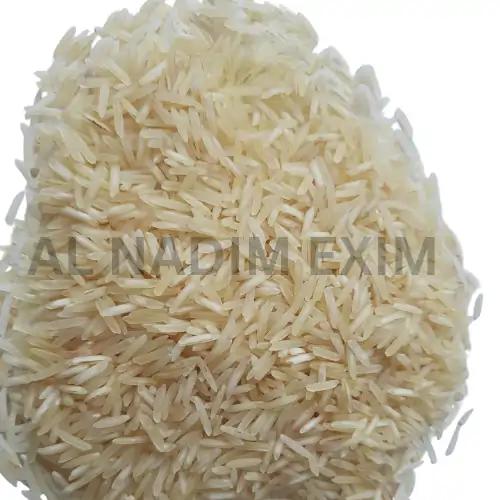
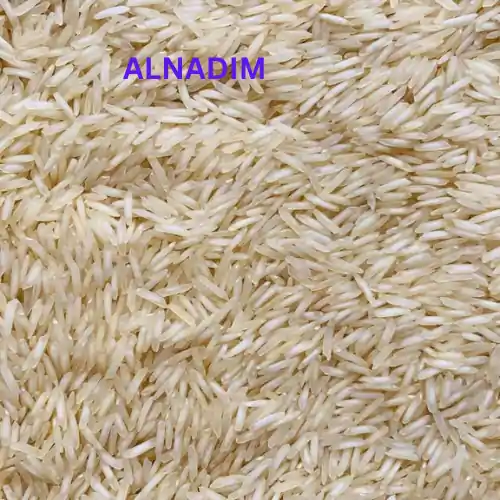


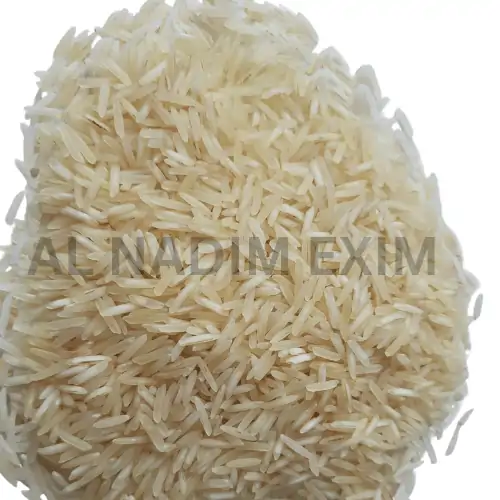
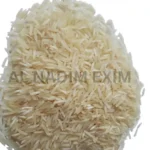
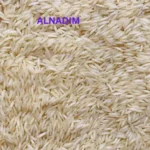

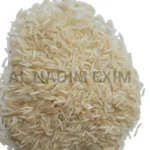





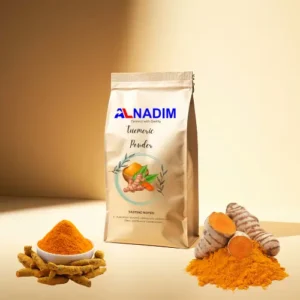

SK sameer –
Best Quality Amazing *****
SK AJAZ –
NICE TASTE
John from USA –
Amazing product I bought thrice till date
ANDY JACKSON –
Fine taste worth of buying the product which so cheap price
jackson fernandes –
I remember the taste unforgetable